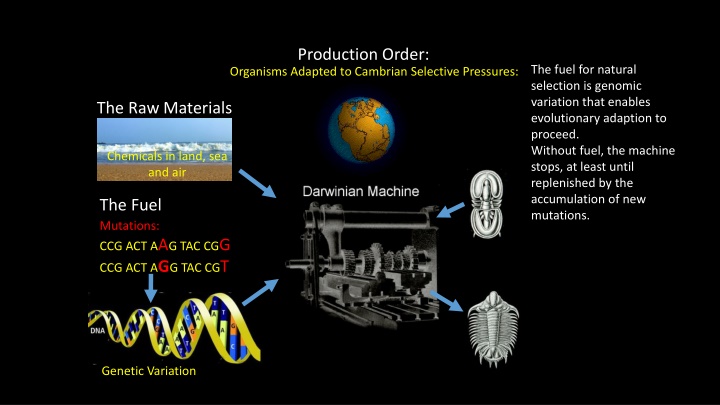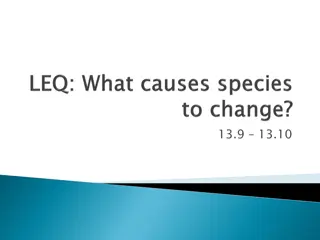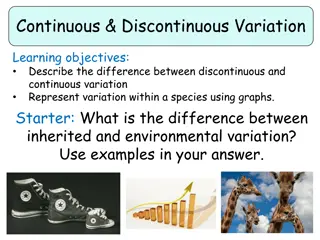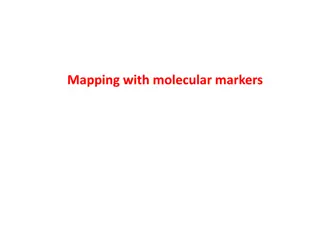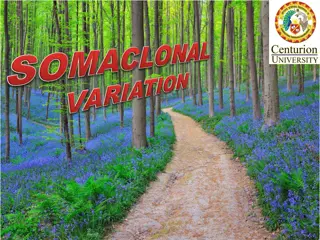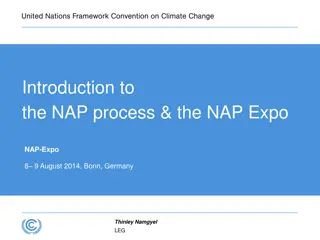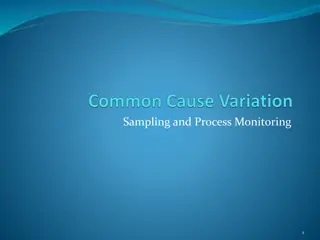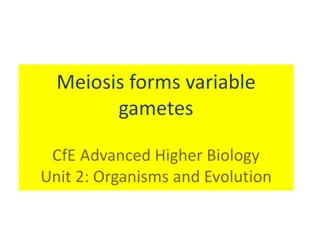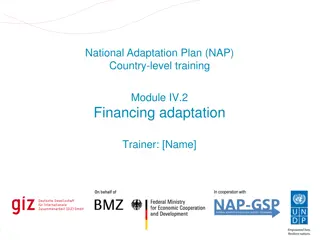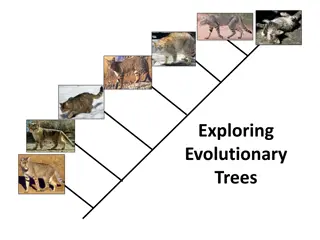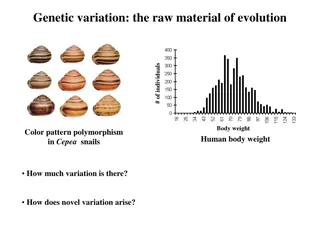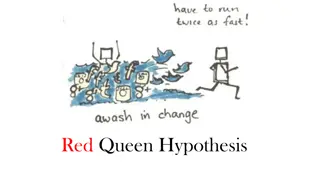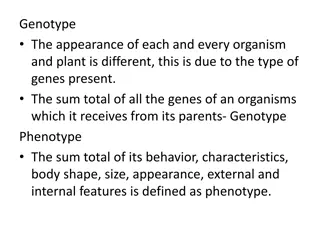Insights into Evolutionary Adaptation and Genetic Variation
The production order highlights the essential role of genomic variation as fuel for natural selection, driving evolutionary adaptation. The Cambrian Explosion timeframe reveals a rapid increase in evolutionary adaptation, showcasing the appearance of diverse animal phyla over a relatively short period. Gene flow illustrates the transfer of alleles between populations through immigration, contributing to genetic diversity. The existence and decline of Phylum Vetulicola add complexity to evolutionary narratives.
Download Presentation

Please find below an Image/Link to download the presentation.
The content on the website is provided AS IS for your information and personal use only. It may not be sold, licensed, or shared on other websites without obtaining consent from the author.If you encounter any issues during the download, it is possible that the publisher has removed the file from their server.
You are allowed to download the files provided on this website for personal or commercial use, subject to the condition that they are used lawfully. All files are the property of their respective owners.
The content on the website is provided AS IS for your information and personal use only. It may not be sold, licensed, or shared on other websites without obtaining consent from the author.
E N D
Presentation Transcript
Production Order: The fuel for natural selection is genomic variation that enables evolutionary adaption to proceed. Without fuel, the machine stops, at least until replenished by the accumulation of new mutations. Organisms Adapted to Cambrian Selective Pressures: The Raw Materials Chemicals in land, sea and air The Fuel Mutations: CCG ACT AAG TAC CGG CCG ACT AGG TAC CGT Genetic Variation
Cambrian Explosion Timeframe Fossil Record suggests: Evolutionary adaptation increases ~ 10 fold All but one of the extant animal phyla appeared over ~ 20 million years, less than .5% of Earth s geologic time Other phyla appeared but did not survive (e.g., Vetulicolia) The so called explosion abruptly terminated at about 515 million years ago, after which a biodiversity decline ensued Begins at base of Cambrian period of Paleozoic Era, some 540 million years ago
Gene Flow Gene Flow Population B: red Population A: blue Offspring of immigrated has genotype Hh Offspring of immigrated has genotype Hh Gene flow is the transfer of alleles from one population to another population through immigration of individuals. In this example, one of the birds from population A (blue) immigrates to population B (red), which has less of the dominant alleles, and through mating incorporates its alleles into the other population.
Phylum Vetulicola Phylum Vetulicola
